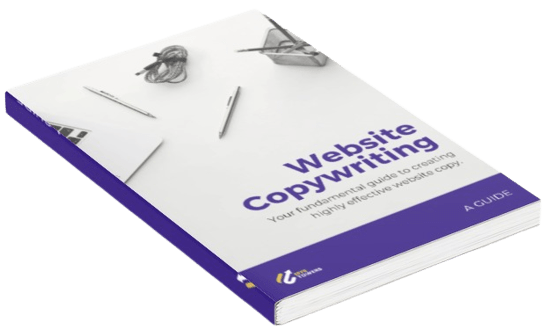In today’s digital age, a website serves as one of the first points of contact for a business or brand with its customers, making it imperative to have a website copy that engages visitors and keeps them interested in what you offer.
But how do you create a website copy that engages and keeps visitors interested? The answer lies in the use of effective writing techniques, as well as a thorough understanding of your audience.
While many different factors can affect whether or not your website copy is engaging, the most important thing to remember is that you need to keep your visitors interested. This can be a difficult task, especially if you’re writing website copy for the first time and don’t have a lot of experience in this area.
In this article, we will discuss the best practices for website content creation and management that will help you craft website copy that captures the attention of your visitors, keeps them engaged, and eventually converts them. To achieve this, we will begin with the basics.
What is a Website Copy?
Website copy refers to the written content on a website. It is the primary means of conveying information and messaging to visitors.
It includes everything from the home page to the About page, product descriptions, blog posts, and more. The purpose of website copy is to position your business as an authority in your industry, educate prospects about the products and services you offer, and convince them to take action by making a purchase or filling out a form.
An effective website copy is essential for building credibility with visitors, engaging them, and ultimately driving conversions.

Types of Website Copies
There are several types of website copy, each with a unique purpose depending on the purpose of your website, the information you want to convey, and the action you intend your website visitors to take. The most common types of website pages include:
- Home Page Copy: The home page is the first page that visitors see when they land on a website. The home page copy should be attention-grabbing, informative, and it should provide visitors with a clear idea of what the website is all about.
- About Us Copy: The About page is where visitors can learn more about the company or organization behind the website. About Us copy should tell the company’s story, explain its values and mission, and establish credibility with visitors.
- Product/Service Descriptions: These pages provide detailed information about the products or services offered by the company. Product or service descriptions should highlight the benefits of the products or services and provide enough information for visitors to make an informed decision.
- Landing Page Copy: A landing page is a page designed to capture leads or drive conversions. A landing page copy should be focused, persuasive, and highlight the benefits of the product or service being offered.
- Blog Posts: Blog posts are a great way to provide visitors with valuable information, establish expertise, and drive traffic to a website. Blog posts should be informative, engaging, and relevant to the target audience.
The Importance of Engaging Website Copies
- Captures Attention: Effective website copy can capture visitors’ attention and keep them engaged with the website. Attention-grabbing headlines, compelling content, and a well-structured website can all help capture and maintain visitor attention.
- Establishes Credibility: Engaging website copy can establish credibility with visitors by providing them with valuable information, showcasing the company’s expertise, and demonstrating a commitment to customer satisfaction.
- Drives Conversions: The ultimate goal of website copy is to drive conversions. Engaging website copy can help visitors understand the benefits of the product or service being offered, establish trust and credibility, and ultimately lead to a conversion.
- Builds Brand Awareness: Effective website copy can help build brand awareness by communicating the company’s values, mission, and unique selling proposition to visitors.
An effectively written website copy is critical for building a strong online presence, establishing credibility with visitors, and driving conversions. By understanding the different types of website copy, you can create content that resonates with your target audience, captures attention, and drives results.
Best Practices for Writing an Engaging Website Copy

It’s important to remember that a website is just one part of a larger strategy. While it may seem like the most important part, without a strategic approach and effective execution, your website no matter how well-designed and developed, will fall flat without a well-written copy. Here are some best practices for writing engaging website copy:
1. Understand Your Audience
Before you start writing a website copy, it’s essential to understand your audience. Knowing your audience will help you tailor your copy to their needs and interests, ensuring it resonates with them.
To understand your audience, you can conduct market research, survey your customers, and create customer personas. Customer personas are fictional representations of your ideal customers and can help you create copy that speaks directly to them.
Once you understand your audience, you can start crafting copy that resonates with them, using language and tone that they can relate to.
2. Plan Your Content
Before you start writing, it’s important to plan your content. To do this, identify the purpose and goals of each piece of content. Consider the tone and style of your website copy: Is it formal or casual? Will you be using humor? How will users respond if they see a grammatical error or spelling mistake?
Once you’ve decided how much time each piece should take to write (and edit), you can estimate how much content you’ll need. This will help you stay on track during the writing process and ensure that you don’t leave anything out.
3. Craft Attention-Grabbing Headlines and Subheadings
Your headline is the first thing your visitors will see, so it’s crucial to create an attention-grabbing headline that entices them to keep reading.
There are several techniques for creating an attention-grabbing headline (hero text) and subheadings, including using numbers or statistics, asking a question, or using powerful words that evoke emotion. For example, “10 Tips for Boosting Your Website’s Traffic” is a compelling headline that incorporates a number and promises valuable information.
Once you’ve crafted a headline, it’s essential to optimize it for search engines and social media platforms.
4. Write Compelling Content
Once you’ve grabbed your visitor’s attention with your headline, keeping them engaged with compelling content is essential. Compelling content is interesting, informative, and relevant to your visitors.
To create compelling content, consider using storytelling, writing in a conversational tone, and incorporating visuals such as images, videos, and infographics. Incorporating visuals into your copy can also make it more engaging and appealing to your visitors. Use high-quality images and videos that are relevant to your content to keep your visitors engaged.
Storytelling is also a powerful technique that can help you connect with your audience on a personal level, while a conversational tone makes your copy more relatable and accessible.
Other factors that can make your copy more engaging include;
- Using short and concise sentences and paragraphs.
- Writing in an active voice, not a passive voice.
- Adding a personal touch to the copy, if possible.

Download your free website copywriting guide/template
We have made a simple guide to assist you in creating your own highly effective website copy from scratch.
4. Format for Readability
Formatting is an often-overlooked aspect of website copy, but it’s essential for creating an easy-to-read and visually appealing copy.
To format your copy for readability, use subheadings to break up your content into sections, incorporate bullet points to highlight key information, and write short paragraphs that are easy to scan.
5. Optimize Your Content
Search engine optimization (SEO) is optimizing your website for search engines like Google, Bing, and Yahoo. By incorporating SEO into your website copy, you can increase your visibility in search engine results pages (SERPs) and drive more traffic to your website.
To incorporate SEO into your website copy, conduct keyword research to identify relevant keywords that your target audience is searching for. Then, incorporate these keywords into your copy, including headlines, descriptions, and other content.
It’s also essential to optimize your meta descriptions, which are the short snippets that appear in search engine results pages. Write compelling meta descriptions that accurately describe the content of your page and entice visitors to click through to your website.
6. Edit and Proofread Your Copy
Once you’ve written your website copy, it’s essential to edit and proofread it thoroughly. Editing involves reviewing your copy for clarity, accuracy, and readability. Ensure that your copy is well-structured, flows logically, and uses correct grammar and punctuation.
Proofreading involves reviewing your copy for spelling errors, typos, and other mistakes. Use tools like Grammarly or Hemingway Editor to check for spelling and grammar errors, and proofread your copy manually to catch any errors that might have been missed.
7. Updating and Managing Your Content
Creating engaging website copy is not a one-time process. Your website copy needs to be updated and managed regularly to ensure that it remains relevant and up-to-date.
Set up a content calendar and schedule regular updates to your website copy. This could include adding new pages, updating existing pages, or creating blog posts. Regular updates will help keep your website fresh and interesting to your visitors.
8. Track Your Content Performance

You can use analytics to track the performance of your website content. This will help you identify what’s working and what isn’t so that you can improve the quality of your copy in the future.
- Monitor Website Analytics: You should be tracking all sorts of metrics, including page views, unique visitors, and bounce rate (the percentage of people who leave after viewing one page). These numbers will give you an idea about how many people visit your site regularly–and where they’re coming from (social media channels like Facebook or Twitter). You can achieve this using the Google Analytics tool.
- Track Social Media Metrics: You should also monitor social media metrics such as likes/shares/comments on Facebook posts related to specific articles written by writers under your brand name.
- Measure Content Engagement: Finally – when it comes down to measuring success – nothing beats real-time engagement with readers.
Final Thoughts
Creating engaging website copy is essential for building a strong online presence and establishing credibility with your target audience. By following these best practices for content creation and management, you can create website copy that resonates with your visitors, keeps them engaged, and drives conversions. Remember to focus on your audience, use attention-grabbing headlines, craft compelling content, format for readability, incorporate SEO, and edit and proofread your copy thoroughly.
While these best practices can help you create engaging website copy, if you’re looking for professional website copywriting and development services, Effe Towers can help. Our team of experienced copywriters can craft website copy that speaks to your audience, captures their attention, and keeps them engaged. Contact us today to learn more about our services.




